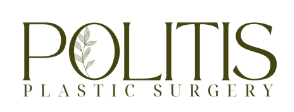Key Takeaways:
- Preparation should begin 4-6 weeks before surgery and includes medical evaluations, medication adjustments, lifestyle changes, and practical arrangements for optimal results and safety.
- Stopping blood-thinning medications and supplements at least 2 weeks before surgery is crucial, along with smoking cessation and alcohol reduction to promote proper healing.
- Creating a proper recovery environment with elevated sleeping arrangements and necessary supplies ensures comfort during the 10-14 day initial recovery period.

Eyelid lift surgery, also known as blepharoplasty, has become one of the most popular facial rejuvenation procedures in the United States, with over 200,000 procedures performed annually according to the American Society of Plastic Surgeons. As patients increasingly seek to address tired-looking eyes, sagging eyelids, and under-eye bags, understanding how to prepare for eyelid lift surgery becomes crucial for achieving optimal results and ensuring a smooth recovery process.
Proper preparation can significantly impact your surgical outcome, recovery time, and overall satisfaction with your results. At Politis Plastic Surgery in Tampa, Dr. Politis emphasizes that well-prepared patients consistently experience better healing, fewer complications, and more predictable results from their eyelid lift procedures.
The preparation process for eyelid surgery extends far beyond simply showing up on surgery day. It encompasses medical evaluations, lifestyle modifications, medication adjustments, and practical arrangements that collectively contribute to your safety and success. Whether you’re considering upper eyelid surgery, lower eyelid surgery, or a combination of both, this comprehensive guide will walk you through every aspect of preparation.
From initial consultation to post-operative planning, we’ll address the most commonly asked questions patients have about preparing for their procedure. You’ll learn about essential medical clearances, medications to avoid, lifestyle changes that promote healing, and practical tips to ensure your surgery day goes smoothly. By following this detailed preparation protocol, you’ll set the foundation for beautiful, natural-looking results that enhance your appearance for years to come.
Understanding Your Eyelid Lift Surgery
Q: What exactly is an eyelid lift and how should I prepare mentally for the procedure?
An eyelid lift, or blepharoplasty, is an in-office procedure that eliminates sagging skin folds, excess fatty deposits, and puffiness that create a heavy, baggy eye appearance. The final result is a more relaxed, refreshed, and youthful appearance. Understanding the procedure is the first step in effective blepharoplasty preparation.
The surgery works by rejuvenating the upper and lower eyelids through the removal of excess skin and fat, followed by repositioning of the remaining tissues. Dr. Politis begins by carefully measuring and marking the areas of skin to be removed, then makes precise incisions along natural eyelid creases to minimize visible scarring.
Q: What should I expect during my consultation?
Your consultation with a qualified plastic surgeon in Tampa, FL is crucial for proper preparation. During this appointment, Dr. Politis will:
- Evaluate your medical history and current health status
- Assess your eyelid anatomy and skin quality
- Discuss your aesthetic goals and realistic expectations
- Explain the surgical technique best suited for your needs
- Review potential risks and complications
- Provide detailed pre-operative instructions
This consultation is also your opportunity to ask questions about the procedure, recovery timeline, and expected results. Studies show that patients who feel fully informed and prepared have significantly higher satisfaction rates with their surgical outcomes.
Q: How do I set realistic expectations for my results?
Setting appropriate expectations is vital for preparing for blepharoplasty surgery. The Cleveland Clinic emphasizes that while eyelid surgery can dramatically improve the appearance of tired, aging eyes, it’s important to understand what the procedure can and cannot accomplish:
What eyelid surgery CAN do:
- Remove excess, sagging upper eyelid skin
- Reduce under-eye bags and puffiness
- Improve vision obstruction from drooping eyelids
- Create a more alert, youthful appearance
- Enhance the natural contours of your eyes
What eyelid surgery CANNOT do:
- Eliminate crow’s feet or wrinkles around the eyes
- Lift sagging eyebrows
- Remove dark circles under the eyes
- Change your basic eye shape or size
- Stop the natural aging process
Q: Should I combine eyelid surgery with other procedures?
Many patients choose to combine their eyelid lift with complementary procedures for comprehensive facial rejuvenation. Popular combinations include:
- Facelift procedures for overall facial rejuvenation
- Brow lift to address forehead aging
- Non-surgical treatments like Botox or dermal fillers
- Laser resurfacing for skin texture improvement
If you’re considering combination procedures, discuss this during your consultation as it may affect your preparation timeline and recovery planning.
Medical and Physical Preparation
Q: What medical evaluations do I need before eyelid surgery?
Comprehensive medical preparation is essential for safe surgery and optimal healing. Your preparation should begin several weeks before your scheduled procedure date.
Required Medical Assessments:
Your preparation begins with a comprehensive physical examination from your primary care physician, particularly important if you have heart disease, diabetes, or other chronic conditions. An eye-specific evaluation may also be recommended if you have glaucoma, dry eye syndrome, or previous eye surgeries.
Depending on your age and medical history, you may need basic blood work including a complete blood count and coagulation studies to ensure you’re healthy enough for surgery.
Q: What medications and supplements should I avoid before surgery?
Proper medication management is crucial when learning how to prepare for eyelid lift surgery. The American Board of Cosmetic Surgery provides specific guidelines for medication management before eyelid surgery:
The most important medications to stop at least 2 weeks before surgery include aspirin, ibuprofen (Advil, Motrin), blood thinners like Plavix, vitamin E supplements, fish oil, and herbal supplements such as ginkgo or ginseng. These can all increase your risk of bleeding during and after surgery.
However, continue taking your regular prescription medications for heart conditions, blood pressure, thyroid, and depression unless specifically instructed otherwise. Never stop prescribed medications without consulting both your surgeon and the prescribing physician first.
Important Note: Never stop prescribed medications without consulting both your surgeon and prescribing physician. Some medications may require special management or alternative approaches.
Q: What lifestyle changes should I make before surgery?
Smoking Cessation and Lifestyle Changes
If you smoke, quitting at least 4 weeks before surgery is absolutely essential. Smoking dramatically impairs healing by reducing oxygen delivery to tissues and increasing infection risk. Similarly, minimize alcohol consumption for at least 2 weeks before surgery, as alcohol can interfere with anesthesia and increase bleeding risk.
Focus on eating a healthy diet rich in protein, vitamin C, and zinc to support healing. Stay well-hydrated and maintain regular, moderate exercise until one week before surgery. Good circulation and overall fitness significantly improve your recovery process.
Pre-Operative Instructions and Timeline
Q: What is the detailed timeline for preparing for eyelid surgery?
Your preparation should begin about 4-6 weeks before surgery with your initial consultation and any required medical clearances. During this time, start your smoking cessation program if needed and arrange time off work.
About 2-3 weeks before surgery, attend your pre-operative appointment, complete any lab work, fill your prescriptions, and begin reducing alcohol consumption. Confirm all your arrangements for transportation and help at home.
One week before surgery, stop all blood-thinning medications and supplements, prepare your recovery space, and complete your grocery shopping and meal preparation. Focus on getting plenty of rest and maintaining good nutrition during this final week.
Q: What specific eyelid lift pre op instructions should I follow on surgery day?
On surgery day, shower with antibacterial soap and wash your face thoroughly, but don’t apply any makeup, moisturizers, or skincare products. Wear comfortable, loose-fitting clothing that buttons in front – avoid anything that needs to be pulled over your head. Dr. Politis recommends having a light breakfast 60-90 minutes before arriving at the office.
Once you arrive at Politis Plastic Surgery, the team will take pre-operative photos, provide you with a comfortable gown, and administer oral electrolytes, antibiotics, anti-nausea medication, and light oral sedation as needed.
Q: How should I prepare my home for recovery?
Creating an optimal recovery environment is essential for proper healing and comfort:
Q: How should I prepare my home for recovery?
Set up a comfortable recovery space with a recliner or adjustable bed for elevated sleeping, multiple pillows, and a side table with water, medications, and supplies within easy reach. Stock up on ice packs or frozen peas for swelling reduction, refrigerated wet cotton balls (which work best around the eyes), over-the-counter lubricating eye drops, and any prescribed pain medications.
Make sure to have entertainment options like books or streaming services available, as you’ll need to rest with your head elevated for several days. Purchase gentle, fragrance-free facial cleanser and high SPF sunscreen for future use once you’re cleared to go outside again.
Common Questions About Eyelid Surgery Preparation
Q: How long should I take off work and what should I expect during recovery?
Most patients with desk jobs can return to work within 5-7 days, though you may have some residual swelling and bruising. If you have a physical job involving heavy lifting or manual labor, plan for 2-3 weeks off work. Those in public-facing positions typically need 1-2 weeks depending on their comfort level with any remaining discoloration.
You’ll experience temporary soreness, numbness, bruising, and swelling that peaks around 48-72 hours after surgery. The Johns Hopkins Medicine team notes that while initial recovery is relatively quick, final results aren’t visible for 3-6 months as residual swelling completely resolves. Most patients also experience temporary dry eye symptoms that typically resolve within 4-6 weeks.
Q: What complications should I be aware of and how can I minimize risks?
While eyelid surgery is generally very safe, it’s important to understand potential risks. Most patients experience only expected side effects like temporary soreness, bruising, swelling, dry eyes, and light sensitivity. Serious complications are rare but can include infection, bleeding, poor scarring, or temporary changes in sensation.
The best way to minimize risks is to follow all pre-operative instructions precisely, choose a board-certified plastic surgeon with extensive experience, maintain excellent health before surgery, and plan for adequate rest and recovery time. Having realistic expectations about results and timeline also contributes to overall satisfaction.
Q: What about contact lenses and my skincare routine?
Remove contact lenses at least 24 hours before surgery and bring eyeglasses to your appointment. You won’t be able to wear contacts for at least 2 weeks after surgery, so make sure you have backup glasses available during recovery.
For skincare preparation, discontinue retinoids, glycolic acid, and other exfoliating products 2 weeks before surgery. Stick to gentle, fragrance-free cleansers and apply broad-spectrum sunscreen daily. On surgery day, cleanse your face thoroughly but apply no products whatsoever – no moisturizer, makeup, or skincare items.
Q: How do I manage existing health conditions and medications?
If you have diabetes, monitor your blood sugar levels closely during preparation and maintain consistent medication timing. Coordinate with your endocrinologist about surgery day management, as stress can affect blood sugar levels.
Continue all prescribed blood pressure medications unless specifically instructed otherwise, and take your morning dose on surgery day with a small sip of water. For those taking depression or anxiety medications, generally continue as prescribed but discuss any concerns with both your psychiatrist and surgeon.
If you have heart conditions, you may need cardiology clearance, and blood thinning medications require special management. Always coordinate closely between your specialists and plastic surgeon to ensure safe care.
Conclusion
Proper preparation is the foundation of successful eyelid lift surgery and optimal results. By following this comprehensive guide on how to prepare for eyelid lift surgery, you’re taking essential steps toward achieving the refreshed, youthful appearance you desire while minimizing risks and ensuring the smoothest possible recovery.
Key Preparation Takeaways:
- Start early – Begin your preparation 4-6 weeks before surgery
- Follow medical guidelines precisely regarding medications and health evaluations
- Make necessary lifestyle changes including smoking cessation and alcohol reduction
- Prepare your recovery environment with all necessary supplies and support
- Maintain realistic expectations about results and recovery timeline
- Choose an experienced surgeon who prioritizes patient education and safety
The investment in proper preparation pays dividends in your final results. Patients who follow detailed pre-operative instructions consistently experience better healing, fewer complications, and higher satisfaction with their outcomes. Remember that eyelid surgery results last 5-7 years on average, making thorough preparation well worth the effort.
Ready to begin your eyelid lift journey? Schedule your consultation with Dr. Politis at Politis Plastic Surgery in Tampa today. During your personalized consultation, you’ll receive detailed, individualized preparation instructions tailored to your specific needs and medical history.
Don’t let preparation anxiety prevent you from achieving the refreshed, confident appearance you deserve. With proper planning and expert guidance from an experienced plastic surgeon in Tampa, FL, your eyelid lift surgery can be a smooth, successful experience that enhances both your appearance and your confidence for years to come.
Take the first step toward brighter, more youthful-looking eyes – contact Politis Plastic Surgery today to schedule your comprehensive eyelid lift consultation and receive your personalized preparation plan.
References:
- American Society of Plastic Surgeons. (2024). 2023 Plastic Surgery Statistics Report. ASPS National Clearinghouse of Plastic Surgery Procedural Statistics. https://www.plasticsurgery.org/news/plastic-surgery-statistics
- American Board of Cosmetic Surgery. (2024). Eyelid Surgery Procedure Guide: Preparation and Recovery. ABCS Patient Education Resources. https://www.americanboardcosmeticsurgery.org/procedure-learning-center/face/eyelid-surgery-guide/
- Johns Hopkins Medicine. (2024). Eyelid Lift Surgery: Treatment, Tests and Therapies. Johns Hopkins Medical Information. https://www.hopkinsmedicine.org/health/treatment-tests-and-therapies/eyelid-lift
- Cleveland Clinic. (2023). Blepharoplasty (Eyelid Surgery): What It Is, Details & Recovery. Cleveland Clinic Medical Information. https://my.clevelandclinic.org/health/treatments/8409-eyelid-surgery-blepharoplasty










